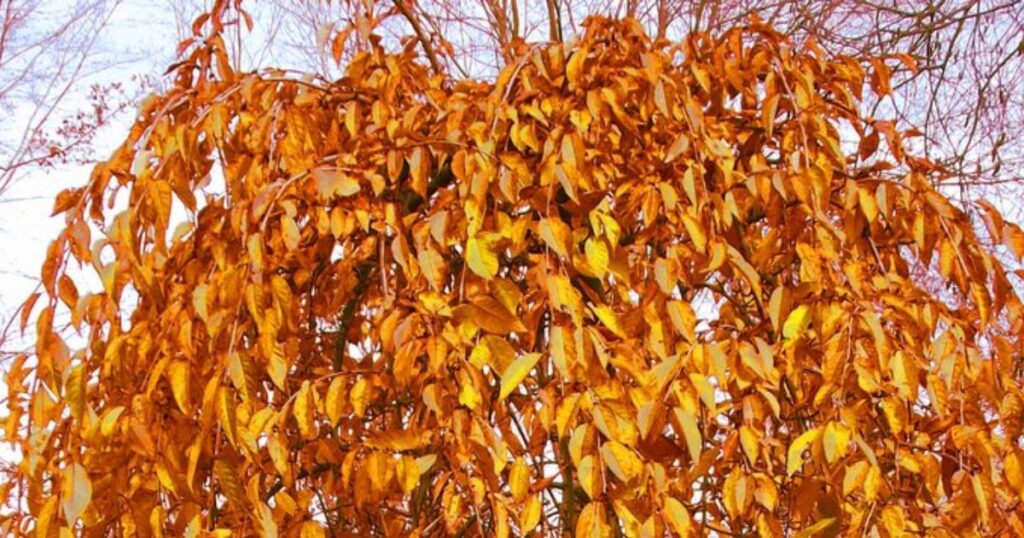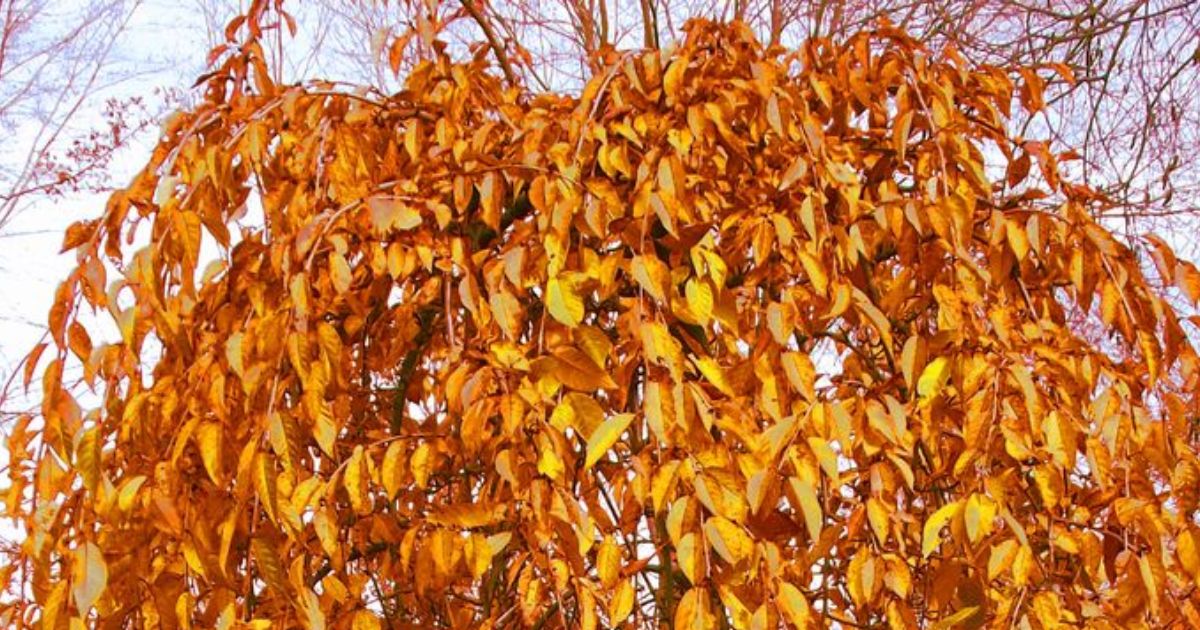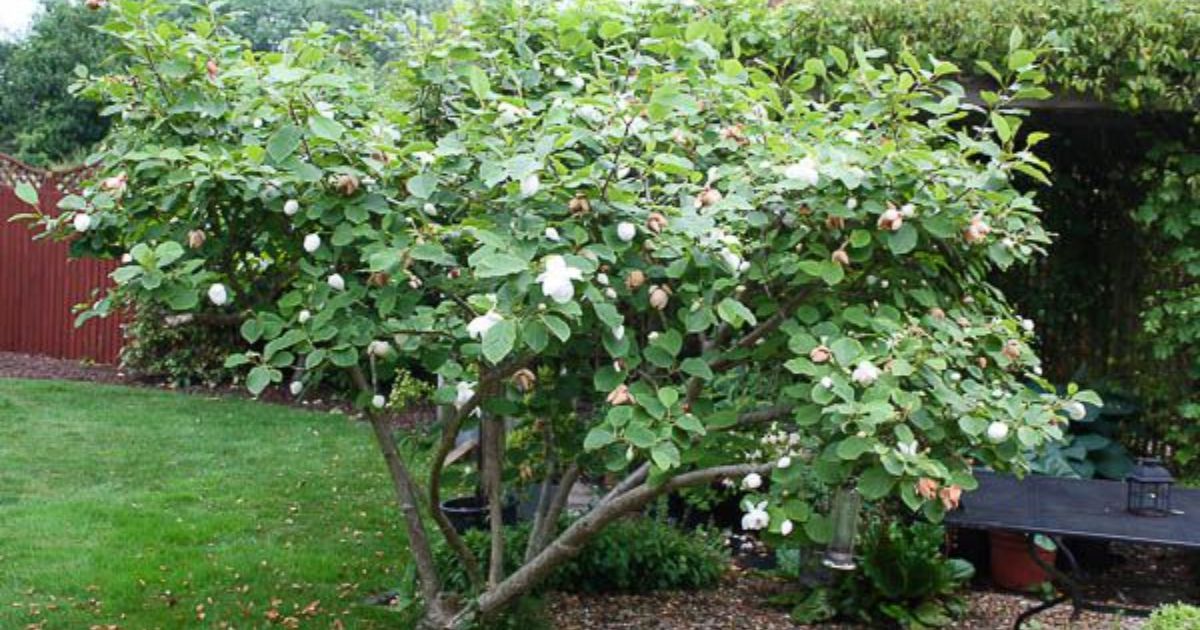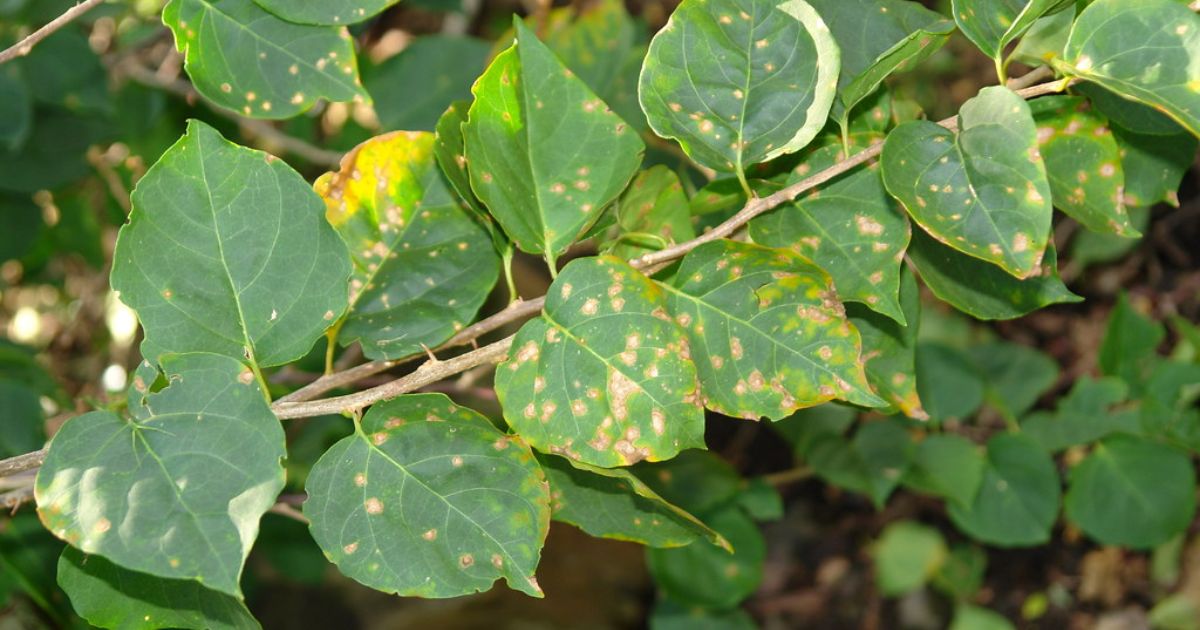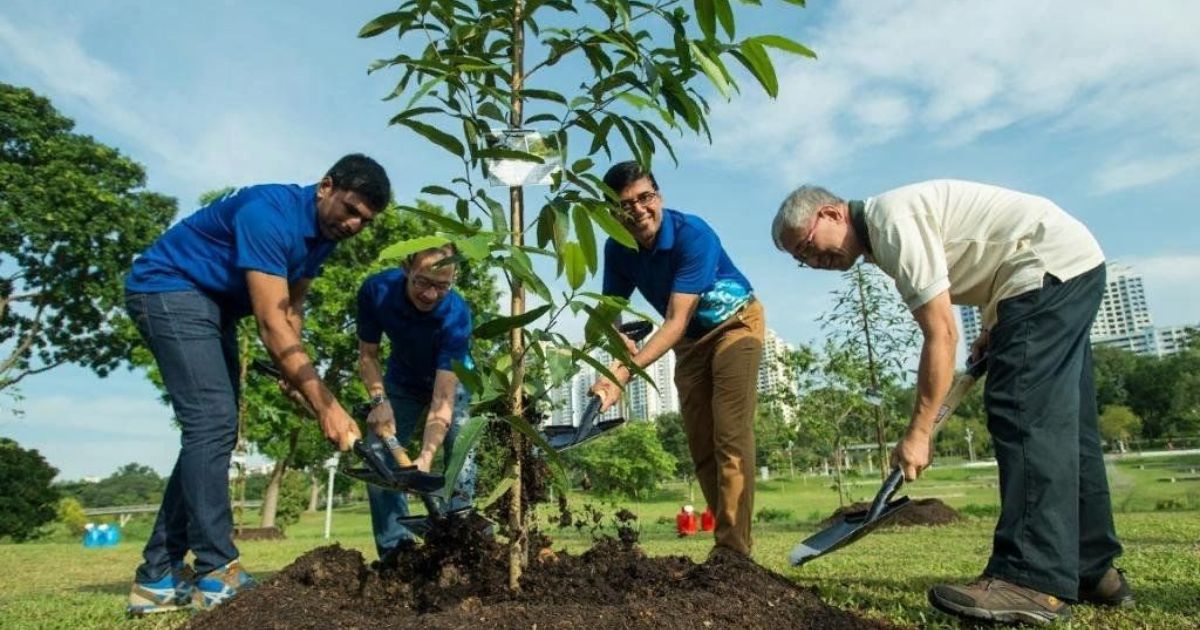Cherry trees are treasured for their beautiful blossoms and delicious fruit, but their health is reflected most clearly in their foliage. When cherry tree leaves begin to turn brown, it’s a sign that something is wrong, and ignoring it can lead to reduced flowering, poor fruit yield, or even long-term damage to the tree. Leaf browning is not always a simple cosmetic issue; it can signal a variety of problems ranging from environmental stress and nutrient deficiencies to pests and fungal diseases.
Understanding the cause of browning leaves is the first step toward restoring your cherry tree’s health. Whether it’s due to excessive or insufficient water, harsh sunlight, fungal infection, or insect damage, cherry tree leaves turning brown A prompt diagnosis and course of treatment can have a profound impact. In this guide, we’ll explore the common causes of brown leaves on cherry trees, how to diagnose the problem, effective treatments (both natural and chemical), and preventive care tips to keep your tree vibrant and healthy throughout the year. By following these guidelines, you can ensure your cherry tree continues to thrive and remains a beautiful, fruitful part of your garden.
Top Reasons Your Cherry Leaves Go Brown
You nurture your tree with love, but sometimes culprits crash the grove. Pinpoint these common offenders, and you slash the problem at its root (pun intended). Here’s the lineup, with fixes you tackle today:
- Thirsty Roots or Soggy Feet? Water Woes Strike Hard. You underwater during dry spells, and leaves brown from the tips inward as the tree rations resources. The flip side: Overwatering drowns the roots, sparking rot that quickly browns the edges. Your Fix: Check soil moisture two inches down. If dry, water deeply once a week (aim for 1-2 inches). If the soil is wet, ease off and improve drainage by using raised beds. Mulch like a pro to lock in that Goldilocks moisture, not too much, not too little.
- Hungry for Nutrients? Deficiencies Drain the Green. Iron shortages (a common issue in alkaline soil) cause yellow leaves to appear before the veins brown, while potassium deficiencies scorch margins. Your tree starves silently in poor soil. Your Fix: Test the soil pH and adjust it to 6.0-7.0 with sulfur if it’s too acidic. In early spring, treat with a balanced fertilizer (10-10-10) or use a chelated iron supplement to promote quick green growth. Compost annually to build a nutrient-rich soil.
- Pest Invaders? Bugs and Borers Bite Back. Aphids suck sap, leaving curled, brown tips; peach tree borers tunnel in, causing branches to wilt from the inside out. How to Identify Purple Leaf Plum Tree Diseases You spot sticky honeydew or sawdust piles? Intruders alert! Your Fix: Blast aphids with a strong water hose spray, or unleash insecticidal soap. For borers, you prune affected limbs and apply targeted sprays in late summer. Neem oil keeps its organic nature intact.
- Disease Drama? Fungi and Bacteria Brew Trouble. Cherry leaf spot fungus dots leaves brown before they drop; bacterial canker oozes amber sap, browning bark and foliage. Humid summers fuel these villains. Your Fix: Rake fallen leaves religiously; you break the spore cycle. Prune for improved airflow (open up that canopy!), and apply copper fungicide at bud break. If canker grips the trunk, you remove it surgically and seal it with pruning paint.
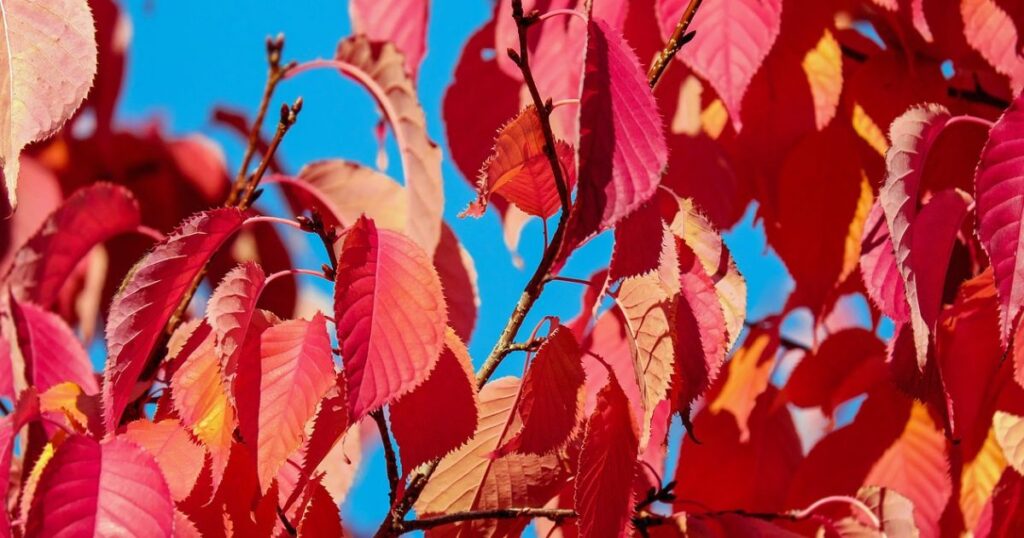
- Stress Overload? Weather and Transplant Tantrums. Scorching sun, drought, or fresh-from-the-nursery shock browns leaves as your tree acclimates. Frost nips tender growth, too. Your Fix: Shade cloth during heat waves, you shield without smothering. Stake new trees loosely, weeping cherry tree disease photos and water consistently for the first year. Harden off transplants gradually to toughen them up.
Diseases of Weeping Cherry Trees
Weeping cherry trees (Prunus subhirtella var. pendula) are prized for their graceful form and beautiful spring blossoms; however, they are vulnerable to several diseases that can impact their health and longevity. It is essential to understand these illnesses in order to recognize them early and treat them effectively.
Cherry Leaf Spot
- Cause: Fungal infection (Blumeriella jaapii).
- Symptoms: Small reddish-purple or brown spots on leaves, which eventually turn yellow and fall prematurely. Severe infections weaken the tree and reduce flowering.
- Treatment: Remove fallen leaves to reduce spores, improve air circulation, and apply fungicides in spring.
Powdery Mildew
- Cause: Fungal infection.
- Symptoms: White or grey powdery coating on leaves, shoots, and buds. Leaves may curl and distort.
- Treatment: Improve air circulation, avoid overhead watering, and apply fungicide when mildew first appears.
Bacterial Leaf Scorch
- Cause: Bacteria (Xylella fastidiosa).
- Symptoms: Leaf margins turn brown, often starting on older leaves, while veins remain green. Gradual leaf drop occurs.
- Treatment: There is no cure; affected trees should be regularly checked for any signs of decline. Reduce stress by practising proper watering and fertilization techniques. Remove severely affected branches.
Black Knot Disease
- Cause: Fungus (Apiosporina morbosa).
- Symptoms: Black, swollen galls or knots on branches and twigs. These knots can girdle branches and stunt growth.
- Treatment: Prune and destroy infected branches during the dormant season. Disinfect pruning tools and apply fungicides.
Cytospora Canker
- Cause: Fungus (Cytospora spp.).
- Symptoms: Sunken, discoloured bark, oozing sap, dieback of branches. The disease often enters through wounds or stress points.
- Treatment: Prune infected branches, What is Damping Off Disease and How to Protect Your Seedlings maintain the tree’s vigour, avoid injury, and ensure proper watering.
Root Rot
- Cause: Fungal pathogens in poorly drained soils.
- Symptoms: Wilting, yellowing leaves, poor growth, and branch dieback. Roots may appear brown and mushy.
- Treatment: Improve drainage, avoid overwatering, and replant in well-draining soil if the issue persists.
Leaf Curl
- Cause: Fungal infection.
- Symptoms: Leaves curl, thicken, and develop reddish or brown patches. Infected leaves eventually drop.
- Treatment: Remove infected leaves, improve airflow, and apply fungicide early in spring before leaf emergence.
Prevention Tips for Weeping Cherry Tree Diseases:
- Plant in well-draining soil with good sunlight.
- Prune regularly to improve airflow.
- Avoid overhead watering.
- Keep trees healthy with proper fertilization.
- Inspect trees periodically and remove diseased plant material.
Do Cherry Blossom Leaves Fall in Spring?
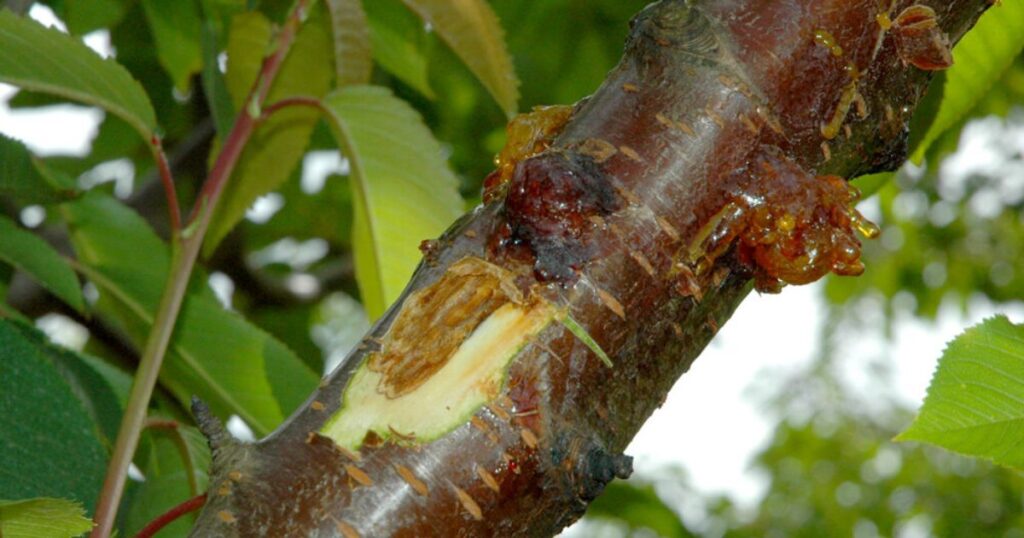
Leaf Drop After Flowering
Many ornamental cherry trees, especially weeping cherry and Japanese cherry blossom varieties, bloom in early to mid-spring. After the flowers fade (often within 1–2 weeks), do cherry blossoms leaves fall in spring the tree shifts energy from flowering to leaf production. In some cases, older leaves from the previous season may naturally drop to make way for new growth. 5 Essential Tips for Japanese Maple Leaf Scorch Treatment This Purple to reddish-brown leaf spots shedding is a regular part of the seasonal cycle.
Environmental Factors
Premature leaf drop can be more noticeable if the tree experiences sudden weather changes, heavy rains, wind, or late frosts, which can cause leaves to fall prematurely.
Disease or Stress
If leaf drop is excessive or accompanied by brown spots, curling, or yellowing, it could indicate a problem such as fungal disease (cherry leaf spot), pest damage, or stress from improper watering or soil conditions.
Natural Remedies for Brown Leaves
Brown leaves on plants, including cherry trees and other ornamentals, are often a sign of stress caused by environmental factors, nutrient deficiencies, pests, or fungal infections. Before using any remedy, it’s essential to identify the cause so treatment is effective. Natural remedies can enhance plant health without the use of harmful chemicals. Here are some safe and eco-friendly options:
Neem Oil Spray
Neem oil repels insects and functions as a natural fungicide. It helps control pests like aphids and spider mites, and reduces fungal growth that can cause leaf browning.
- To use, combine a few drops of mild oil with two tablespoons of neem oil added to liquid soap or water. Spray affected leaves every 7–10 days.
Baking Soda Solution
Baking soda helps prevent fungal infections and maintains a balanced pH level on leaf surfaces.
- Recipe: Mix 1 teaspoon of baking soda in 1 litre of water with a few drops of liquid soap.
- Application: Spray lightly on leaves once a week during the early signs of browning.
Compost Tea
Compost tea is a nutrient-rich solution that boosts plant immunity while enhancing soil health.
- How to use: Steep 2 cups of mature compost in 4 litres of water for 24–48 hours, then strain and spray the solution on the leaves or water at the base.
Mulching
Putting organic mulch around the plant’s base, such as wood chips or shredded leaves, retains soil moisture and moderates temperature, reducing stress that causes leaf browning. Keep mulch a few inches from the trunk to avoid rot.
Garlic or Cinnamon Spray
Garlic and cinnamon contain natural antifungal properties that can protect leaves from fungal diseases.
- Garlic spray: Crush 3 garlic cloves, soak them in 1 litre of water overnight, How to Identify Fungi That Grows on Trees then strain the liquid and use it to spray.
- Cinnamon spray: Mix 1 teaspoon of cinnamon powder. Strain it in 1 litre of warm water, then apply.
Adjust Watering Practices
Both underwatering and overwatering can cause leaves to turn brown. Water deeply and consistently, especially during dry periods, and ensure there is adequate drainage to prevent root rot.
Improve Air Circulation
Prune overcrowded branches and remove debris around the base to prevent fungal diseases and promote healthy foliage.
Preventive Care for Healthy Cherry Trees
Healthy cherry trees are not only beautiful, but they are also more resistant to pests, diseases, and environmental stress. Preventive care is the best way to avoid problems like brown leaves, leaf spots, and reduced flowering. Here’s a comprehensive guide to keeping your cherry tree strong and vibrant year-round.
Choose the Right Location
Cherry trees do best in soil that drains well and receives at least 6 to 8 hours of sunlight each day. Steer clear of planting in low-lying areas where water can collect, as poor drainage increases the risk of root rot and fungal diseases.
Proper Watering
Young trees require consistent watering to establish roots. Brown dead patches on leaves Mature trees prefer deep watering once a week during dry periods. Always water at the base of the tree rather than overhead to reduce fungal problems.
Mulching
To keep the soil moist, cover the base with two to three inches of organic mulch. Regulate temperature, and suppress weeds. Keep mulch a few inches away from the trunk to prevent rot and pests.
Fertilizing
Feed cherry trees in early spring with a balanced fertilizer or one formulated for fruit trees. Avoid excessive nitrogen, which can promote leaf growth at the expense of flowers and fruit.
Seasonal Pruning
Prune after flowering to improve airflow and sunlight penetration. How to Treat Camellia Black Spots on Leaves Remove dead, diseased, or crossing branches to promote healthy growth and lower the risk of infection.
Pest and Disease Monitoring
Inspect leaves regularly for early signs of pests or lower the chance of infection and encourage robust development. To address issues early on before they spread.
Winter Protection
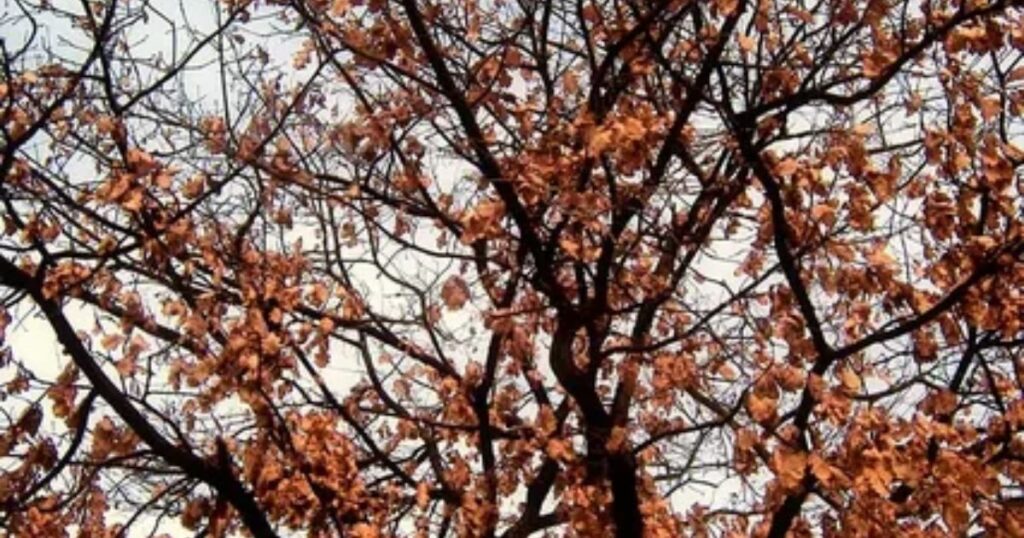
In colder climates, protect young cherry trees from frost by wrapping trunks and applying extra mulch around the base. Avoid late pruning, as it can stimulate vulnerable new growth.
By following these preventive measures, you not only protect your cherry tree from problems like browning leaves but also encourage vigorous growth, abundant blossoms, and fruitful harvests year after year.
Conclusion
Brown leaves on a cherry tree are more than just a cosmetic issue; they are a sign that your tree may be experiencing stress from environmental factors, nutrient deficiencies, pests, or diseases. Identifying the root cause early is crucial for maintaining the health and productivity of your cherry tree. By understanding the common causes of leaf browning and applying the right treatments — whether natural remedies or targeted care you can restore your tree’s vitality.
To keep a cherry tree healthy, Yellowing leaves before falling preventive care is essential. The likelihood of disease and leaf damage can be significantly decreased by practising good fertilization, mulching, pruning, watering, and insect control. Choosing the correct planting location and ensuring good soil drainage are crucial factors in maintaining long-term tree health.With regular attention and thoughtful care, you can enjoy the beauty of lush green leaves, vibrant blossoms, and a fruitful harvest year after year. Healthy cherry trees not only enhance your garden’s aesthetic appeal but also reward you with beauty and bounty for decades to come. By being proactive and quickly resolving problems, your cherry tree can thrive from one season to the next.
FAQ
What causes cherry tree leaves to turn brown?
Brown leaves can result from water stress (overwatering or underwatering), nutrient deficiencies, fungal diseases, pest infestations, sunburn, or environmental stress.
Can brown leaves harm my cherry tree?
While occasional browning is typical, widespread leaf browning can weaken the tree, reduce flowering and fruit production, and increase its susceptibility to pests and diseases.
How can I prevent my cherry tree’s leaves from turning brown?
Proper watering, mulching, fertilizing, pruning, pest control, and planting in well-draining soil with adequate sunlight are key preventive measures.
Are brown leaves always a sign of disease?
Not always. Brown leaves can be caused by natural seasonal changes, environmental stress, or minor nutrient imbalances. However, persistent or widespread browning should be investigated.
Can I treat brown leaves naturally?
Yes. Remedies like neem oil, baking soda sprays, compost tea, mulching, and proper watering can improve leaf health and prevent further browning.
When should I seek professional help for my cherry tree?
If the browning is extensive, accompanied by wilting, unusual spotting, or dieback, it’s best to consult an arborist or horticulturist for diagnosis and treatment.

